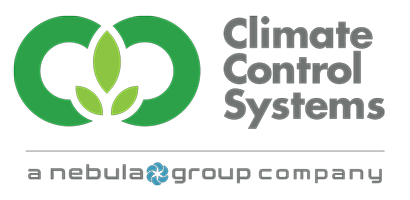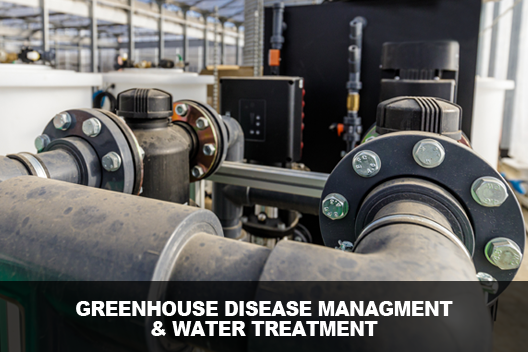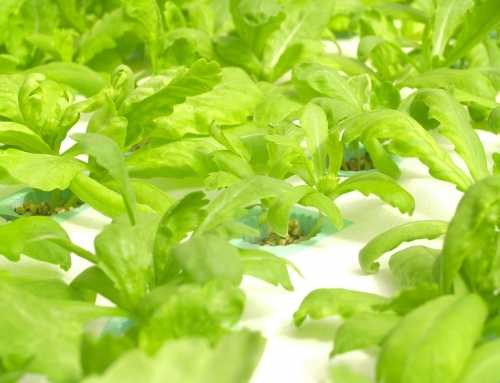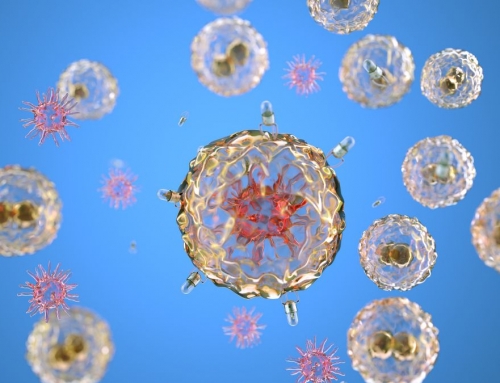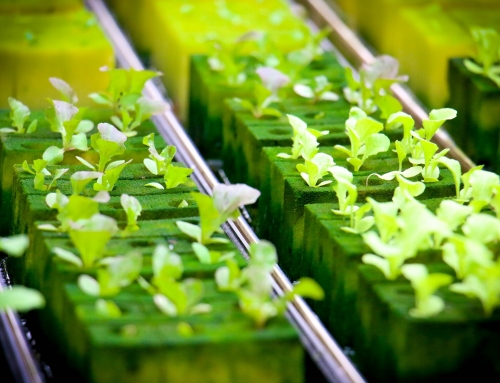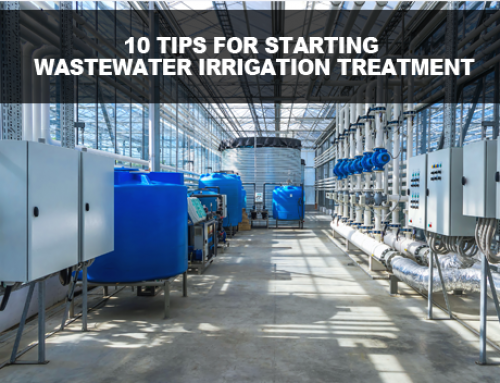Every grower knows that an essential part of a healthy greenhouse crop is clean water. Your irrigation system should be supplied with pure water, and greenhouse growers are gradually realizing the importance of installing a water treatment system to improve water quality.
Greenhouse water treatment is essential for disease management caused by botrytis cinerea, clavibacter michiganensis, pythium, powdery mildew, etc., in plants. There are known water purification solutions options like UV or adding some chlorine to the water feed. However chlorine, isn’t great for plants and UV has a hard time keeping up with higher flow rates in a commercial set up.
It’s essential to know the best disease management practices for greenhouse water treatment and sterilization.
Let’s find out more…
Types of Water Sources
Greenhouse growers depend on various water sources for growing greenhouse crops. This can be a well, surface water, or municipal water. A water source that’s rapidly gaining popularity is the man-made containment pond. It captures rainwater for irrigation purposes.
One of the cleanest sources of irrigation water is municipal water, as they have their own water recycling and treatment system. The water undergoes many steps of filtering, cleaning, water treatment, sanitation, etc.. These steps help remove sediments, chemical contaminants, pathogens, organic pollutants, heavy metals, algae, etc.
As a result, growers get high quality water from the municipality. However, the downside here is that municipal water can be expensive. That’s because the processes that are applied to the water to improve its quality are quite expensive. However, on a smaller scale growers can perform the same processes on premise. Basically turning the Greenhouse into a mini-water treatment recycling system, we will get to that equipment a little later.
First, here is what to avoid…
Dirtiest Sources of Outdoor Water
So we know, the cleanest and safest water is from the municipality. But which source offers the dirtiest water? It is to be noted that all non-municipality sources come with their own challenges. Wells bring you non-surface water that’s free from algae and pathogens. But they may be rich in silt, heavy metals, and or odors.
Surface water from streams and rivers also contains silt, which can hinder the passage of water through irrigation nozzles by clogging them. Any grower using pond water or rain water as an irrigation source will have to install, a heavy duty water filter. The filter, can get rid of the silt or sediment, but it may also contain algae and pathogens.
The worst, however, is a pond. Whether it’s artificial or a natural one – ponds often contain the most turbid water with high levels of microbial and fertilizer contamination. These small, stagnant water bodies are also the breeding ground for algae.
A natural process of cleaning pond water is through bioremediation with the help of duckweeds that grow naturally on the surface of stagnant water. It is not to be confused with algae because duckweeds stop the latter. In fact, the presence of duckweeds in the water indicates good quality.
A Complete Approach for Greenhouse Disease Management
A great place to start is by installing a greenhouse filtration system to reduce the amount of sediment in your water lines. Remember that they are not universal and, and you have to find the right commercial water filter depending on your usage. At Climate Control Systems, we use and trust the Watts Pure Water commercial line of filters.
For instance, the size of the filter mesh is directly associated with the size of the pollutant that it can remove. While 200-mesh can remove 75 microns, 300-mesh can help with 50 microns. A 400-mesh is needed for 35 microns, and a 600-mesh can do the job when the pollutant is 25 microns or smaller.
Let’s take a few examples to understand this better. A 200-mesh will be sufficient for municipal water to eliminate larger contaminants like an oxalis seed of 1000 microns. A greenhouse using pond water will need 600-mesh to filter out algae of 25 microns. But it will not be enough for the 15-micron pythium or 2.5-micron Ralstonia. So, it will fail to clean runoff from irrigation or flood floors.
Along with a better filtration system to improve water quality, a multifaceted approach to greenhouse disease management should be put in place. They can include things like:
- Sanitation
- Crop monitoring
- Quality control
- Water treatment and purification
- Biological control and chemical control
- Integrated pest management
Automation for Greenhouse Water Treatment
Greenhouse automation can come into play after you have your filtration system set up. Climate Control Systems can start to automate the collection, treatment and recycling of your irrigation waste water. We would like to introduce you to the Ozone Pro Greenhouse Water Treatment System, which uses ozone technology to purify the water.
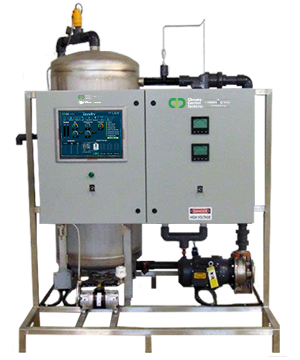


One crop loss only could cost an owner, 100x more than the amount to install and operate a disinfection system. Water disinfection ensures that plant pathogens are not being transmitted along with the irrigation water. Collecting and recycling your irrigation water on site will save you money on both fertilizer and utility costs.
Waterborne diseases and bacterial problems in the irrigation line are very common for growers. The quality of the water is all subject to whatever is existing in the drip line, where pathogens can thrive. All greenhouse owners replace irrigation lines annually, but there may be a better way to keep lines cleaner for longer, and not worry about any disease inside of a growing season.
Many organisms that can inhibit proper plant growth and can be very difficult to sterilize or neutralize by UV. The Ozone pro eliminates 99.999% of all bacteria and pathogens in the irrigation line and the possibility of contamination altogether.
More on Greenhouse Pathogens and Diseases
There are different types of pathogens that infect the plant material in the greenhouse and spread in the water. To prevent such disease pathogens from destroying crops in the greenhouses, growers must first have a fair idea about what types of organisms grow in the water or the greenhouse environment.
Fungi
There are various ways such pathogens spread. For instance, foliar nematodes are minuscule aquatic worms that can spread from one plant to another and travel in leachate. In greenhouses, the two most common pathogens are pythium and phytophthora.
These are closely related to aquatic microbes and are fungus-like microorganisms. But there are some major differences, too. Pythium is present almost everywhere in nature, including field soils. It causes damage to the plant material in water systems and growing media like Rockwool slabs with no soil.
Phytophthora, on the other hand, is distributed only in localized forms in nature. It is stronger than pythium, though it is less commonly found in greenhouses than pythium. Similar to pythium and phytophthora is fusarium. Though it’s not an aquatic fungus, it spreads easily through irrigation systems in a greenhouse from plant to plant.
Your greenhouse crops may have to deal with other infections caused by fungi. These include powdery mildew or root rot. This can be the result of high relative humidity, as well as standing water. You must make sure not to leave your plants and monitor seedlings and crops to ensure that they are not in too much moisture or water. When watering plants, make sure to allow the water to drain onto the floor.
Fungi can cause plants to wilt or develop stem and foliage spot or fuzz. Sometimes, this can go as far as yellowing and collapsing. If the fungal infection only affects the surface, Neem oil, along with better circulation, can help get rid of it. But infections in the transport tissues cannot be treated. Such deeply infected plants must be discarded.
Bacteria
Next comes bacteria such as botrytis blight and erwinia. Bacteria can spread because of tools, containers, and clothing, and it is essential to use sanitizers and improve air circulation to prevent the bacterial disease problem in a greenhouse. They develop in plant parts that are soaked in water and cause the affected plant material area to melt and become sticky.
It is not possible to recover a plant material from such a condition. So, the best thing to do is get rid of that so that the affected plant material does not spread to other plant parts like foliage or stems. It is the only method of disease control to keep your greenhouse plants safe.
Viruses
Don’t forget to consider viruses that are brought to your greenhouse by insect pests like thrips and aphids. Make sure to monitor everything from the roots to foliage to see signs of insects. To prevent insects from destroying plants, use screens, herbicides, and sanitizers.
Signs of viral diseases in plants include yellow rings or patchy leaf spot patterns. Viruses, too, cannot be cured once they start to affect plants. The only thing to do is rouge out diseased plants and plant material in order to same the rest of the greenhouse crops.
A Holistic Approach Towards Greenhouse Disease Management
Managing diseases in your greenhouse and preventing pathogens from spreading is a tough job that needs multiple steps. Ideally, you should do it at various levels to ensure that you take a holistic approach towards supplying clean water to your crop production in the greenhouse.
Water coming into the greenhouse may or may not be free from pathogens. Unless it is municipal water, this is an unrealistic expectation, especially when you use local surface water sources. But water source is only one point of contamination. There are other ways water can get contaminated in and around the growing area.
Water lab tests are one of the easiest and most common ways to detect whether foul water is at play. It is a good idea to take the help of a lab to identify the disease pathogens. Tests may also reveal other underlying problems such as insufficient plant nutrition, improper usage of fertilizers, etc. The primary aim is to find out the root cause of problems so that you can take the necessary steps.
You can also do a plant inspection for signs of root rot, wilting, yellowing of plant surfaces, stunted growth, etc. Remove the possibly infected plants away from the rest to prevent the diseases from spreading.
Paying attention to different sources of pathogens and taking care of nutrients are as important as water treatment. So make sure to follow the above guidelines to ensure that the water treatment is effective.
Climate Control’s Greenhouse Automation Systems
When it comes to plant health, you have to rely on trusted technology that will help you save time and money. That’s where Climate Control’s greenhouse automation systems can help growers. The Ozone Pro is the best water treatment solution, while the Fertigation Manager helps put in place batch and feed programs that be automated on a schedule. The Climate Manager helps manage the greenhouse environment and quality control.
The Ozone Pro
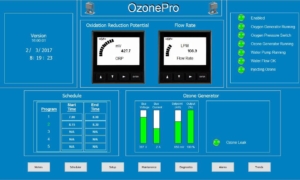


The Ozone Pro treats and purifies water to give your greenhouse the best supply for irrigation. It can sterilize wastewater for your crops. These ozone generators are tailored with different features to fit your needs. It not only kills microorganisms and also boosts sterilization for better plant growth.
The Fertigation Manager
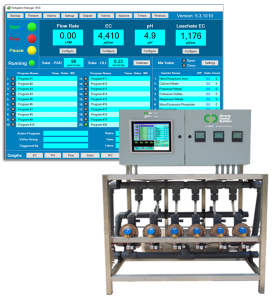


The Fertigation Manager is equipped with advanced technology to help growers maintain complete control over their fertilization and irrigation programs in the greenhouse. You can irrigate your greenhouse crops with it and control the entire system in the greenhouse centrally for the best growth.
The Climate Manager



The Climate Manager is another remotely controllable equipment that helps manage environmental factors like temperature, humidity, air flow, etc. It is also equipped with software for managing irrigation, misting, steaming, and hot water programs to suit the plants in your greenhouse.
Contact Us Today
With the Ozone Pro and the Fertigation Manager systems, commercial greenhouse growers can enjoy the opportunity to implement the best practices in the greenhouse to ensure that your plants get the best-quality water, delivering nutrients and boosting the health of your crops. Advanced technology is used to help greenhouse farmers. What’s more, the equipment is customized for each farmer.
Since the establishment of Climate Control System Inc. in 1985, its experts have helped growers around the world. The systems not only improve yield but also reduce cost and energy usage. If you are interested in learning more about our commercial grade greenhouse water treatment systems please contact us from our website form.
